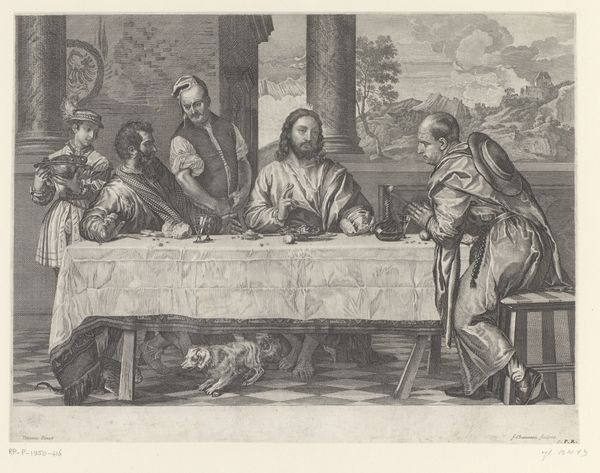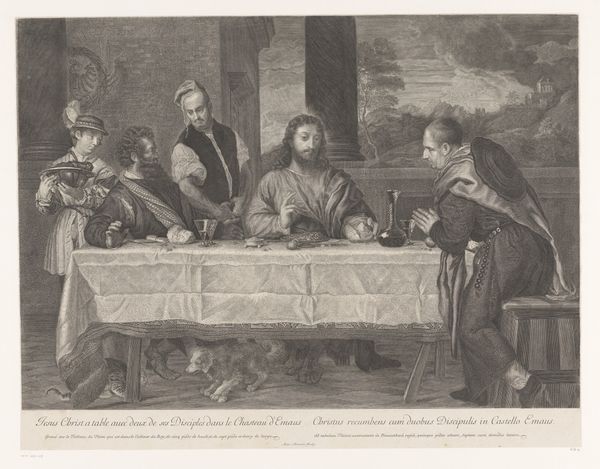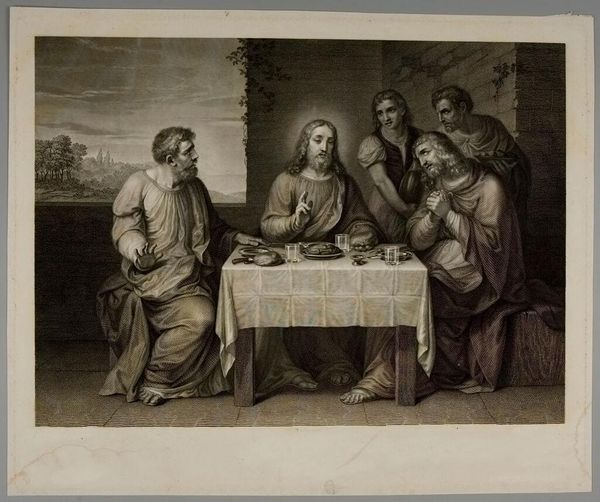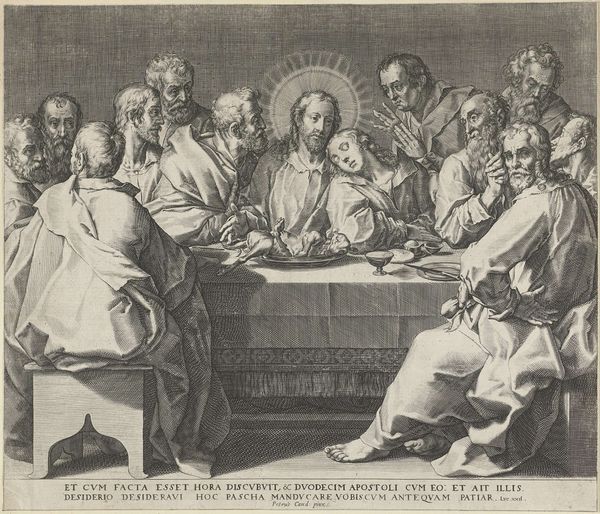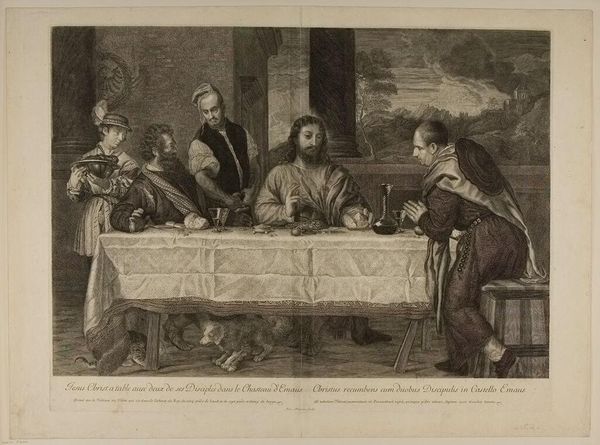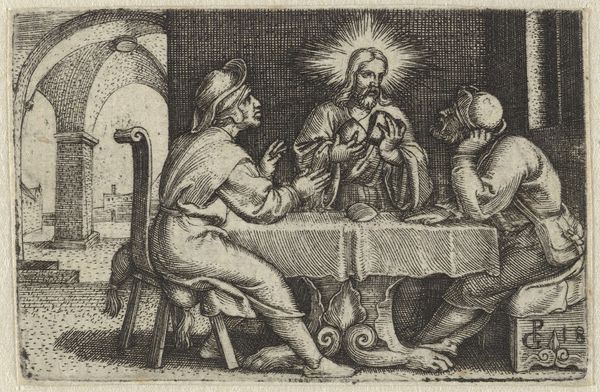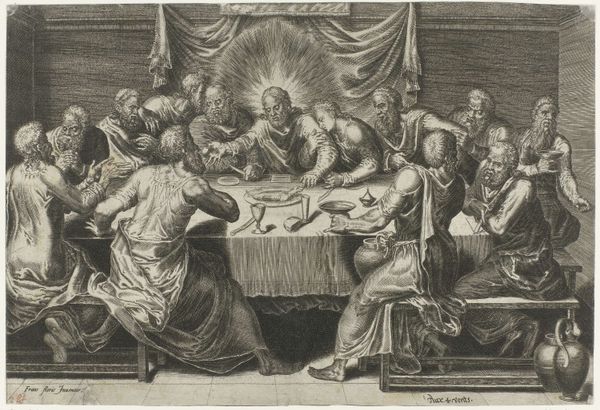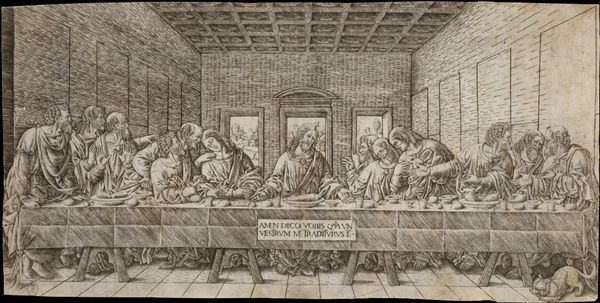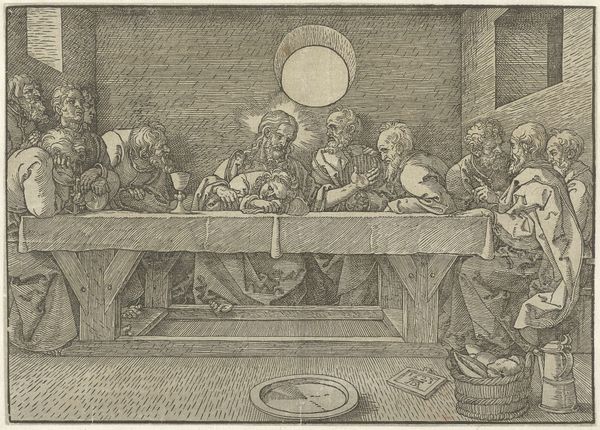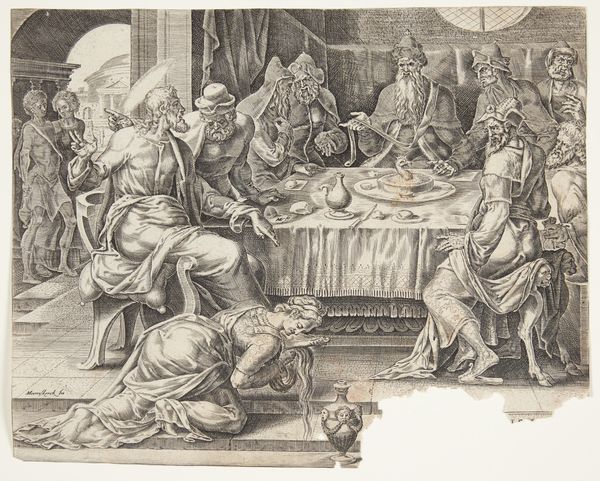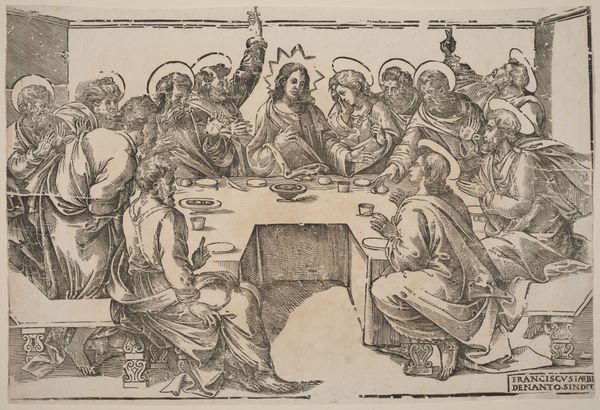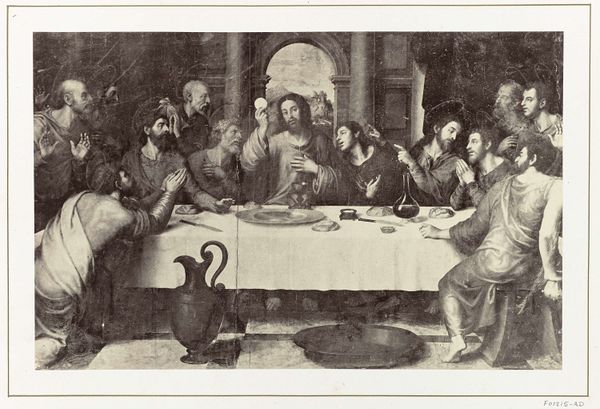
pencil drawn
light pencil work
wedding photograph
photo restoration
wedding photography
pencil sketch
charcoal drawing
old-timey
limited contrast and shading
19th century
Dimensions: 321 mm (height) x 367 mm (width) (plademaal)
Curator: Edvard Sonne, a Danish artist working in the 19th century, is the creator of this print. The work, entitled "Christus i Emmaus," was executed between 1836 and 1840 and is currently housed at the SMK, the National Gallery of Denmark. Editor: The figures gathered around that long table project a kind of hushed solemnity. It’s mostly monochromatic. A very serene tableau, yet something about the dog lurking under the table feels unsettling to me. Curator: Ah, yes, the dog. It reminds us that the divine often enters through the mundane. Consider the Gospel story itself. Jesus, after his resurrection, appears to two disciples on the road to Emmaus. They don't recognize him until he breaks bread with them. This moment of recognition is potent with symbolic significance—a bridge between earthly and spiritual planes. Editor: I see the dog as potentially subversive. Aren’t these religious narratives always used to uphold certain social structures and hierarchies? Even Christ's actions during this meeting imply he possesses higher knowledge and, therefore, power, especially in relation to gender and class norms. I wonder what placing this dog underneath might communicate regarding the unseen or ignored in religious interpretation? Curator: It could reflect societal undercurrents. However, domestic animals have long held a symbolic place. Perhaps here, the dog symbolizes faith and loyalty, acting as an alert yet silent witness to this pivotal spiritual event. Animals appear in countless symbolic forms across various religions, revealing cross-cultural meaning-making through the non-human. Editor: Fair enough. Sonne situates the event very consciously; the backdrop creates a window onto wealth, influence, power—the architectural framework, for instance. One man kneels in supplication. Who has the ability to offer grace or deny salvation here, in terms of societal structures? What systems do figures like Christ often unintentionally reinforce through supposedly revolutionary messaging? Curator: You bring a vital dimension to how we perceive and internalize art. To consider the potential political or philosophical implications inside such art makes that period less remote to a modern audience, certainly. Editor: Precisely! Because what is art if not an agent that triggers and enables reflection?
Comments
No comments
Be the first to comment and join the conversation on the ultimate creative platform.
